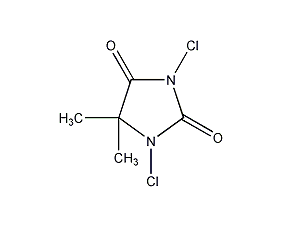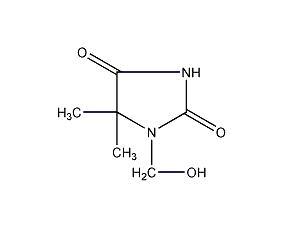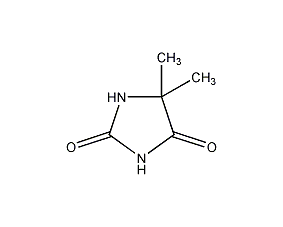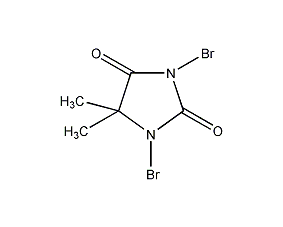1,3-Dichloro-5,5-dimethylhydantoin


Structural formula
| Business number | 039V |
|---|---|
| Molecular formula | C5H6Cl2N2O2 |
| Molecular weight | 197.02 |
| label |
water treatment agent |
Numbering system
CAS number:118-52-5
MDL number:MFCD00003190
EINECS number:204-258-7
RTECS number:MU0700000
BRN number:146013
PubChem ID:None
Physical property data
1. Properties: white powder. It absorbs moisture easily and is partially hydrolyzed after absorbing moisture. Has a slightly pungent odor.
2. Density (g/mL, 25℃): 1.5
3. Relative vapor density (g/mL, air=1): Undetermined
4. Melting point (ºC): 132-134
5. Boiling point (ºC, normal pressure): Undetermined
6. Boiling point (ºC, KPa): Undetermined
p>
7. Refractive index: Undetermined
8. Flash point (ºC): 171
9. Specific rotation (º): Undetermined
10. Autoignition point or ignition temperature (ºC): Undetermined
11. Vapor pressure (mmHg, ºC): Undetermined
12. Saturated vapor pressure (kPa , ºC): Undetermined
13. Heat of combustion (KJ/mol): Undetermined
14. Critical temperature (ºC): Undetermined
15 . Critical pressure (KPa): Undetermined
16. Log value of oil-water (octanol/water) distribution coefficient: Undetermined
17. Explosion upper limit (%, V/V ): Undetermined
18. Lower explosion limit (%, V/V): Undetermined
19. Solubility: Slightly soluble in water.
Toxicological data
1. Irritation: Rabbit transdermal: 100mg/24H severe irritation.
2. Acute toxicity: guinea pig oral LD50: 1350mg/kg
Rat oral LD50: 542mg/kg
Rabbit oral LD50: 1520mg/ kg
Rabbit transdermal LD50: >20g/kg
Rat inhalation LCL0: 20gm/m3/1H
Ecological data
Slightly harmful to water.
Molecular structure data
5. Molecular property data:
1. Molar refractive index: 35.75
2. Molar volume (cm3/mol): 113.5
3. Isotonic specific volume (90.2K): 300.7
4. Surface tension (dyne/cm): 49.2
5. Polarizability (10-24cm3): 14.17
Compute chemical data
1. Reference value for hydrophobic parameter calculation (XlogP): 1.1
2. Number of hydrogen bond donors: 0
3. Number of hydrogen bond acceptors: 2
4. Number of rotatable chemical bonds: 0
5. Number of tautomers: none
6. Topological molecule polar surface area 40.6
7. Number of heavy atoms: 11
8. Surface charge: 0
9. Complexity: 229
10. Number of isotope atoms: 0
11. Determine the number of atomic stereocenters: 0
12. Uncertain number of atomic stereocenters: 0
13. Determine the number of chemical bond stereocenters :0
14. Number of uncertain chemical bond stereocenters: 0
15. Number of covalent bond units: 1
Properties and stability
Stable at room temperature and pressure, avoid contact with reducing agents and moisture.
Storage method
Stored in a cool, ventilated warehouse. Keep away from flammable substances, reducing agents, and water sources. Equipped with the appropriate variety and quantity of fire equipment. Suitable materials should be available in the storage area to contain spills.
This product is packed in lined plastic bags, outer woven bags or plastic barrels. Store in a cool, dry, ventilated place, protected from sunlight and moisture, and be stored and transported in accordance with general chemical regulations.
Synthesis method
Produced by chlorination of 5,5-dimethylhydantoin in the presence of alkaline substances.

Purpose
Mainly used as water treatment agent, disinfectant and fruit preservative, it has the characteristics of high efficiency, broad spectrum, safety and stability, and can strongly kill fungi, bacteria, viruses and algae. Mainly used as a bactericidal and algaecide, it can effectively kill various bacteria, fungi, viruses, algae, hepatitis viruses, etc.


